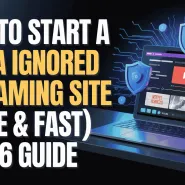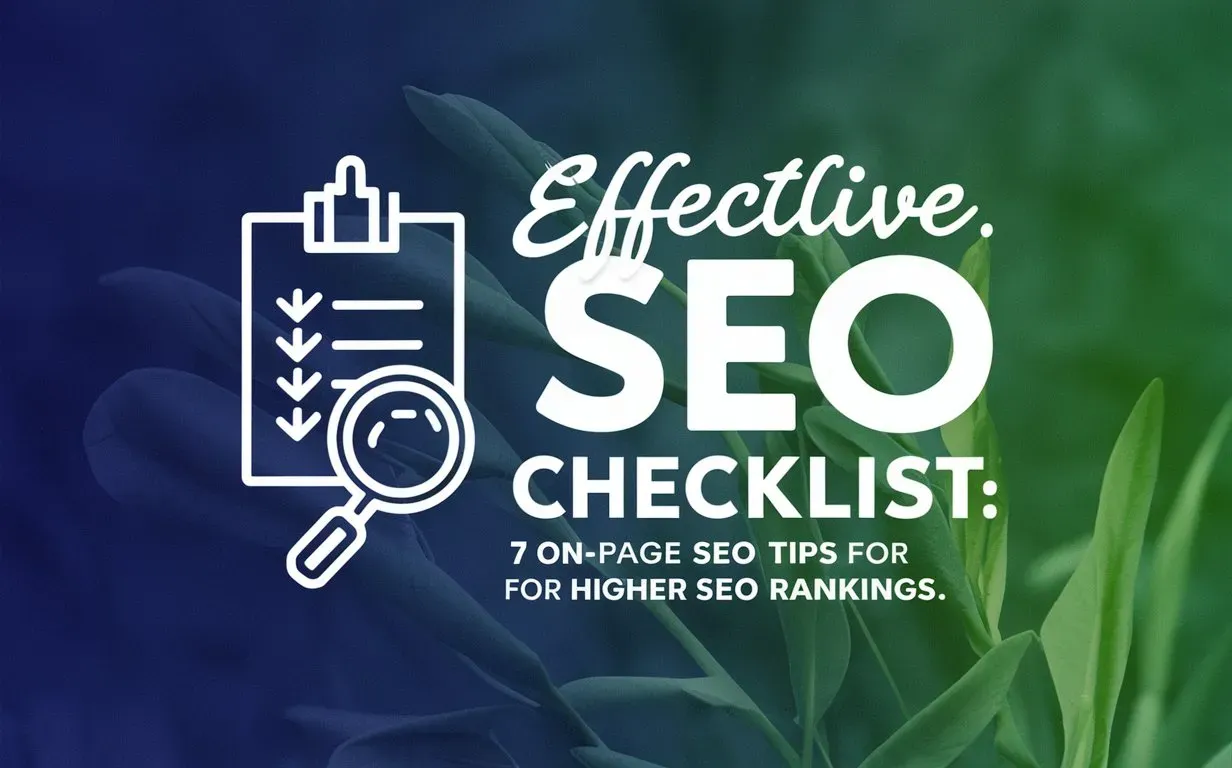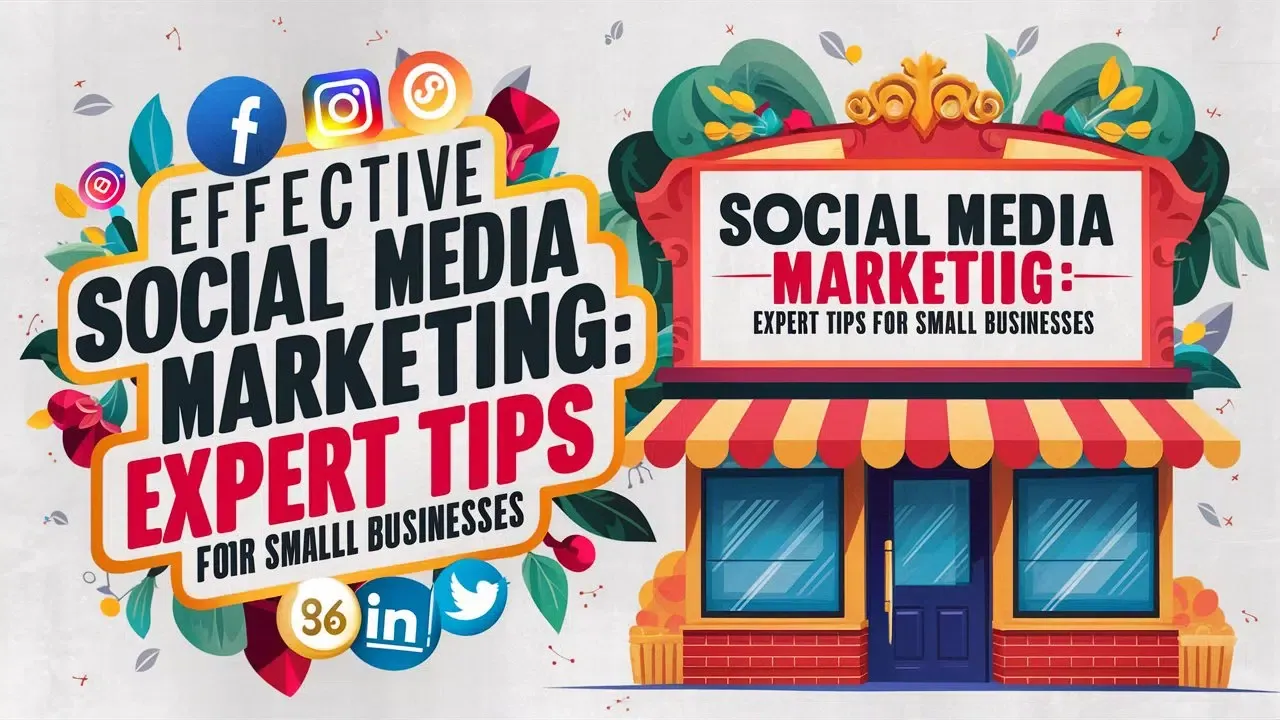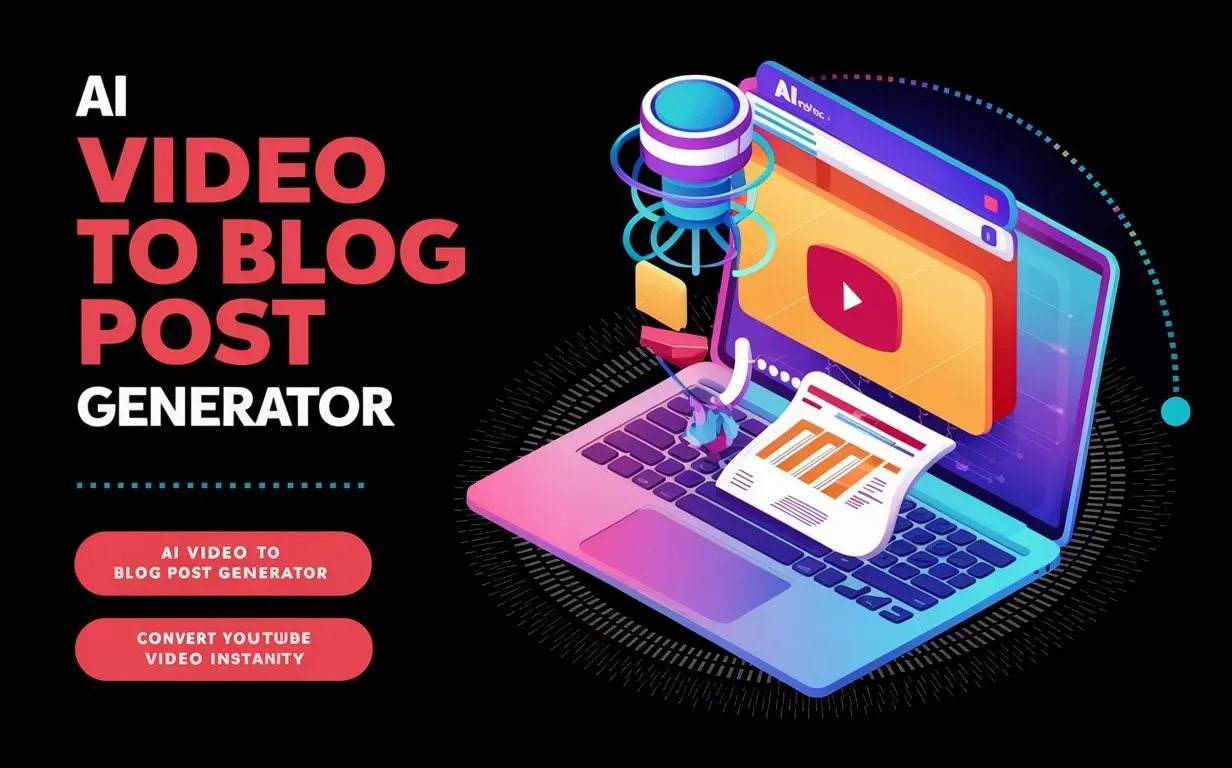Getting good at search engine optimization (SEO) is really important for businesses that want to stand out online. With so many websites out there, having solid on-page SEO can be what makes your site successful or just another one that gets ignored. That’s where Owrbit’s guide comes in: “Effective SEO Checklist: 7 On-Page SEO Tips for Higher Rankings.” This guide is perfect for marketers, business owners, and content creators who want to improve how their site shows up on search engine results pages (SERPs).
In this guide, we break down key on-page SEO techniques that can make a big difference in your website’s ranking. We cover everything from optimizing title tags and meta descriptions to improving user experience and content quality. Each tip is crafted to help you get the most out of on-page SEO. Whether you’re a digital marketing expert or just starting, these easy-to-follow tips will help you make smart choices that boost your website’s visibility. Let’s dive into these 7 expert tips and unlock your site’s potential for better rankings and more organic traffic. Your journey to SEO success starts now!

Introduction to On-Page SEO :
On-page SEO is a crucial part of SEO that focuses on optimizing individual web pages to rank higher in search results and earn more relevant traffic. In 2025, understanding SEO basics is essential for any website owner looking to enhance their search engine ranking. Utilizing an SEO plugin can help you analyze your content on your website and improve it according to SEO best practices. This involves creating high-quality pieces of content that are informative and engaging, which can significantly improve your chances of ranking higher in Google search results.
To achieve optimal results, you should run an SEO audit using an SEO checker and follow an on-page SEO checklist. Important ranking factors include page speed, page load time, and ensuring that each page on your site is well-structured. A well-crafted technical SEO checklist can help search engines better understand your content, which is vital for improving your website’s SEO. Additionally, leveraging Google Search Console and other SEO tools will enhance your SEO efforts and provide insights into your search ranking performance.
Implementing effective SEO strategies and keeping up with the latest SEO factors will ensure that your website stays competitive. Following a checklist for 2024 can streamline your on-page SEO efforts and help you maintain better rankings in search results. For instance, optimizing technical SEO elements can be a game-changer. Remember, even minor adjustments can result in significant improvements, so regularly perform an SEO audit checklist to identify areas for enhancement. Ultimately, the goal is to rank higher, increase visibility, and drive more traffic to your site in the ever-evolving landscape of search engine algorithms.

Importance of doing On-Page SEO:
Here are key points highlighting the importance of on-page SEO:
- Improves Search Rankings: Optimizing on-page elements helps search engines understand your content, leading to higher rankings in search results.
- Increases Organic Traffic: Better visibility in search results translates to more visitors finding your website through organic searches.
- Enhances User Experience: Well-structured content and a user-friendly design make it easier for visitors to navigate your site and find valuable information.
- Reduces Bounce Rates: Engaging and relevant content encourages users to stay longer on your site, which can lower bounce rates.
- Boosts Conversion Rates: A positive user experience can lead to higher conversion rates, as satisfied visitors are more likely to take desired actions.
- Strengthens Content Relevance: On-page SEO helps ensure that your content is relevant to users’ search queries, increasing the chances of attracting the right audience.
- Facilitates Better Indexing: Properly optimized pages make it easier for search engines to crawl and index your site, improving overall site performance.
- Creates Clearer Site Structure: Effective use of headers and internal links helps organize your content, making it easier for users and search engines to navigate.
- Enhances Brand Credibility: A well-optimized site often appears more professional, increasing user trust and brand credibility.
- Adapts to Algorithm Changes: Focusing on on-page SEO allows you to respond more effectively to search engine algorithm updates that affect rankings.

7 On-Page SEO Tips for Higher SEO Rankings :
Here are 7 on-page SEO tips to help boost your website’s rankings:

1. Optimize Title Tags :
Title tags are critical for both search engines and users. A title tag serves as the clickable headline for your web page in search results, and it’s important for SEO because it tells search engines what the content of the page is about.
To optimize your title tags, make sure each page has a unique title that accurately reflects its content. Include primary keywords towards the beginning of the title, but ensure it reads naturally. Aim for a length of 50-60 characters so that the full title displays in search results without being cut off. A well-optimized title tag can increase your click-through rate (CTR), ultimately leading to more traffic.
How to Optimize Title Tags :
- Keep It Concise: Aim for 50-60 characters to ensure the title is fully displayed in search results.
- Use Relevant Keywords: Incorporate primary keywords relevant to the page content, placing them at the beginning for better visibility.
- Make It Descriptive and Specific: Clearly describe the content of the page to set appropriate user expectations.
- Include Branding (if applicable): Add your brand name at the end of the title for recognition, especially if your brand is well-known.
- Avoid Keyword Stuffing: Don’t overload the title with keywords; focus on natural readability.
- Use Actionable Language: Include engaging action words like “Discover,” “Learn,” or “Boost” to entice users to click.
- Consider Your Target Audience: Tailor the title to resonate with what your audience is searching for and their language preferences.
- Test and Refine: Use tools like Google Search Console to monitor CTR and adjust titles based on performance.
- Avoid Duplicate Titles: Ensure each page has a unique title tag to prevent confusion and improve SEO.
Example of an Optimized Title Tag :
- “7 Proven On-Page SEO Tips to Boost Your Rankings | YourBrandName”
2. Craft Compelling Meta Descriptions
A meta description is a brief summary of a webpage’s content that appears under the title in search engine results. Though meta descriptions don’t directly influence rankings, they play a crucial role in attracting clicks.
A compelling meta description should be concise (150-160 characters), include primary keywords, and be engaging enough to entice users to click through to your page. Use action-oriented language and highlight what makes your content unique or valuable. This summary serves as your pitch to potential visitors, so make it count!
How to Craft Compelling Meta Descriptions :
- Keep It Concise: Aim for 150-160 characters to ensure the entire description is visible in search results.
- Include Primary Keywords: Use relevant keywords to improve SEO, but ensure they fit naturally within the context of the description.
- Be Descriptive: Clearly summarize the content of the page, highlighting what users can expect to find when they click through.
- Use Action-Oriented Language: Incorporate verbs that encourage action, such as “Discover,” “Learn,” “Explore,” or “Get started” to entice users.
- Highlight Unique Value: Showcase what makes your content unique or valuable compared to competitors, such as exclusive insights, tips, or solutions.
- Address User Intent: Understand what users are searching for and tailor your description to meet their needs or questions.
- Create a Sense of Urgency: If applicable, use phrases that encourage immediate action, such as “Limited time offer” or “Don’t miss out!”
- Avoid Duplicate Descriptions: Ensure each page has a unique meta description to prevent confusion and improve SEO.
- Use a Natural Tone: Write in a conversational tone that resonates with your target audience to enhance relatability.
Example of a Compelling Meta Description :
“Unlock the secrets of on-page SEO with our expert tips! Discover 7 proven strategies to boost your rankings and drive more traffic to your site.”
3. Incorporate Keywords Naturally :
Integrating keywords into your content is essential for SEO, but it must be done thoughtfully. Start by researching relevant keywords that align with your content. Use these keywords naturally within the text, particularly in the introduction, subheadings, and conclusion.
Avoid overusing keywords, as this can lead to “keyword stuffing,” which harms readability and can trigger penalties from search engines. Instead, focus on providing value to the reader while subtly weaving in keywords to maintain a natural flow.
How to Incorporate Keywords Naturally :
- Conduct Keyword Research: Identify relevant keywords and phrases that your target audience is searching for. Use tools like Google Keyword Planner or SEMrush to find suitable options.
- Use Primary Keywords in Key Locations: Place primary keywords in important areas such as the page title, first paragraph, subheadings, and conclusion. This helps search engines and readers understand the main focus of your content.
- Write for Your Audience First: Prioritize creating high-quality, engaging content that addresses your audience’s needs. Focus on delivering value rather than forcing keywords into the text.
- Use Synonyms and Related Terms: Incorporate synonyms and variations of your main keywords to create a more natural flow. This approach helps avoid redundancy and enriches your content.
- Utilize Long-Tail Keywords: Include long-tail keywords (phrases with three or more words) in your content. They often match user intent more closely and can improve your chances of ranking for specific queries.
- Maintain a Natural Flow: Ensure that keywords fit naturally within the context of your sentences. Read your content aloud to check if it sounds conversational and coherent.
- Avoid Keyword Stuffing: Refrain from overusing keywords, which can lead to poor readability and potential penalties from search engines. A good rule of thumb is to keep keyword density around 1-2%.
- Use Keywords in Image Alt Text: Optimize images by using descriptive file names and alt text that includes relevant keywords. This helps with SEO and improves accessibility.
- Incorporate Keywords in Meta Tags: Include primary keywords in your meta title and meta description to enhance visibility in search engine results.
- Review and Revise: After writing, review your content to ensure keywords are naturally integrated. Edit any awkward phrasing that stands out.
Example of Natural Keyword Incorporation :
- Instead of: “SEO tips SEO tips for beginners to improve SEO.”
- Use: “If you’re a beginner looking to improve your site’s visibility, here are some essential SEO tips to get you started.”
4. Optimize Images :
Images enhance user engagement but can slow down your site if not properly optimized. When adding images, ensure they are appropriately sized for the web to improve load times. Use descriptive file names (e.g., on-page-seo-tips.jpg instead of IMG1234.jpg) and include alt text that describes the image content.
This not only helps visually impaired users understand the image but also provides context for search engines, potentially improving your rankings in image search results. Alt text should be concise and relevant to the image and page content.
How to Optimize Images :
- Choose the Right Format: Use appropriate file formats for images:
- JPEG for photographs and images with gradients.
- PNG for images that require transparency or need to maintain high quality.
- GIF for simple animations.
- Compress Images: Reduce the file size of images without sacrificing quality. Use tools like TinyPNG, ImageOptim, or Photoshop’s “Save for Web” feature to compress images. Smaller file sizes improve page load speed.
- Use Descriptive File Names: Rename image files with descriptive, keyword-rich names instead of default names like “IMG_1234.jpg.” For example, use “on-page-seo-tips.jpg” to provide context about the image content.
- Include Alt Text: Add descriptive alt text to every image. This helps search engines understand the content and context of the image. Use relevant keywords naturally, but focus primarily on providing a clear description of what the image represents.
- Implement Image Sitemaps: If you have many images on your site, consider creating an image sitemap. This helps search engines discover and index your images more efficiently.
- Use Responsive Images: Ensure your images adapt to different screen sizes by using the
srcsetattribute or CSS. This improves user experience on mobile devices and helps maintain load speed. - Add Captions: If relevant, include captions under your images. Captions can provide context and enhance user engagement, especially if the images are central to your content.
- Leverage Lazy Loading: Implement lazy loading for images, which delays the loading of images until they are about to enter the viewport. This improves initial page load times and overall performance.
- Use Image Metadata: Fill in relevant metadata for your images, such as title and description tags, to provide additional context for search engines.
- Test Image Performance: Use tools like Google PageSpeed Insights or GTmetrix to analyze the loading speed of your images and overall page performance. Make adjustments as needed to ensure optimal speed.
Example of Optimized Image Practices :
- File Name: Rename
IMG_1234.jpgtoon-page-seo-guide.jpg. - Alt Text: Use
alt="A guide to on-page SEO with 15 tips for better rankings".
5. Improve Page Load Speed :
Page load speed is a crucial factor for user experience and SEO. A slow-loading site can lead to high bounce rates and user frustration. To improve your page load speed, consider optimizing images (compressing them without sacrificing quality), leveraging browser caching (storing some site data on users’ devices for faster loading), and minimizing the use of heavy scripts.
Tools like Google PageSpeed Insights can help identify areas for improvement. Aim for a load time of under three seconds, as faster sites generally rank better and provide a better user experience.
How to Improve Page Load Speed :
- Optimize Images: Compress and resize images to reduce their file sizes without compromising quality. Use appropriate formats (JPEG for photos, PNG for graphics) and add alt text.
- Minimize HTTP Requests: Reduce the number of elements on your page (images, scripts, CSS files) to decrease the number of HTTP requests. Consider combining multiple files into one (e.g., CSS and JavaScript files).
- Use Browser Caching: Leverage browser caching to store some data on users’ devices, allowing them to load your site faster on subsequent visits. Set expiration dates for static resources.
- Enable Compression: Use Gzip compression to reduce the size of your HTML, CSS, and JavaScript files before sending them to the browser. This can significantly speed up loading times.
- Minify CSS, JavaScript, and HTML: Remove unnecessary characters (like whitespace, comments, and punctuation) from your CSS, JavaScript, and HTML files. Tools like Minify and UglifyJS can help with this.
- Use a Content Delivery Network (CDN): A CDN stores copies of your website on multiple servers worldwide, reducing latency by delivering content from the server closest to the user.
- Reduce Server Response Time: Optimize your server’s performance by choosing a reliable hosting provider, upgrading your hosting plan if needed, and minimizing database queries.
- Implement Lazy Loading: Use lazy loading for images and videos, which loads these resources only when they are about to enter the viewport. This reduces initial load time and saves bandwidth.
- Limit Redirects: Minimize the use of redirects, as they add additional HTTP requests and delay page loading. Check for unnecessary redirects and remove them.
- Monitor Performance Regularly: Use tools like Google PageSpeed Insights, GTmetrix, or WebPageTest to regularly assess your page load speed and identify areas for improvement.
Example of Improving Page Load Speed :
- Before Optimization: A page takes 8 seconds to load due to large images and multiple HTTP requests.
- After Optimization: Compress images, use a CDN, and minify files to reduce load time to 3 seconds.
6. Make Your Site Mobile-Friendly :
With a significant amount of web traffic coming from mobile devices, having a mobile-friendly site is essential. A responsive design ensures your site looks good and functions well across all devices, from desktops to smartphones.
Test your site on various screen sizes to ensure that text is readable, buttons are easily clickable, and content is accessible. Google’s mobile-first indexing means that your site’s mobile version is considered the primary version for ranking, so ensuring mobile compatibility is critical for your SEO strategy.
How to Make Your Site Mobile-Friendly :
- Use Responsive Design: Implement a responsive design that automatically adjusts your website layout to fit various screen sizes, ensuring a seamless experience on smartphones, tablets, and desktops.
- Optimize Page Load Speed: Improve load times on mobile devices by compressing images, minifying CSS and JavaScript, and using browser caching. Fast-loading pages are crucial for retaining mobile users.
- Simplify Navigation: Make navigation easy and intuitive on mobile devices. Use a collapsible menu (hamburger menu) to save space and ensure that buttons and links are easily clickable.
- Choose Legible Fonts: Select font sizes that are easy to read on small screens. Use a minimum font size of 16 pixels for body text and ensure sufficient contrast between text and background colors.
- Utilize Touch-Friendly Elements: Design buttons and clickable elements that are large enough for users to tap easily. Aim for a minimum touch target size of 44×44 pixels to enhance usability.
- Avoid Flash: Since Flash is not supported on most mobile devices, use HTML5 and CSS3 for animations and interactive content to ensure compatibility across all devices.
- Implement Mobile-Specific Features: Consider adding features that enhance mobile usability, such as click-to-call buttons, location-based services, or mobile-optimized forms.
- Test on Multiple Devices: Regularly test your site on various mobile devices and browsers to identify and fix any usability issues. Tools like Google’s Mobile-Friendly Test can help assess compatibility.
- Use Scalable Vector Graphics (SVGs): Use SVGs for logos and icons as they are resolution-independent and look sharp on all devices, ensuring high-quality graphics without sacrificing load speed.
- Monitor Analytics for Mobile Performance: Use analytics tools to track mobile user behavior, such as bounce rates and time on site. Analyze this data to identify areas for improvement and enhance the mobile experience.
Example of a Mobile-Friendly Site :
- Before Optimization: A desktop-only website that requires zooming and scrolling to navigate on a mobile device.
- After Optimization: A responsive site that automatically adjusts layout, has legible fonts, and provides easy navigation, resulting in a seamless user experience on all devices.
7. Monitor and Update Content :
Regularly reviewing and updating your content is vital for maintaining its relevance and accuracy. Search engines favor fresh content, so periodically revisit older posts to add new information, update statistics, or refresh links.
Use tools like Google Analytics to identify underperforming content that may benefit from updates. This not only helps improve your SEO rankings but also ensures that users find the most current and useful information on your site, reinforcing your authority on the subject.
How to Monitor and Update Content
- Set Up Analytics Tools: Use tools like Google Analytics and Google Search Console to track user engagement, traffic patterns, and content performance. Monitor metrics such as page views, bounce rates, and average time on page.
- Identify High-Performing Content: Regularly review your analytics to identify which content is driving traffic and engagement. Focus on updating and optimizing these high-performing pieces to maximize their potential.
- Track SEO Rankings: Use keyword tracking tools (like SEMrush or Ahrefs) to monitor your keyword rankings. Keep an eye on any fluctuations and assess how they correlate with changes in your content.
- Solicit User Feedback: Encourage readers to leave comments or provide feedback on your content. Use surveys or polls to gather insights on what topics they find valuable or want to see more of.
- Update Outdated Information: Regularly check for outdated statistics, facts, or references within your content. Replace them with the latest information to maintain credibility and relevance.
- Revise for Accuracy and Clarity: Periodically review your content for clarity, grammar, and formatting. Ensure that your writing is easy to understand and free from errors.
- Refresh Visuals: Update images, graphics, and videos to keep the content visually appealing. Use fresh visuals that align with current design trends or brand updates.
- Repurpose Content: Consider transforming existing content into different formats, such as turning a blog post into an infographic or video. This can reach new audiences and enhance engagement.
- Check Internal and External Links: Regularly review and update links within your content. Ensure internal links lead to relevant pages and that external links are still valid and trustworthy.
- Establish a Content Audit Schedule: Set a regular schedule (quarterly or biannually) for comprehensive content audits. Use this time to evaluate your content strategy and identify areas for improvement.
Example of Monitoring and Updating Content :
- Before Update: An outdated blog post with old statistics and broken links, resulting in poor user engagement.
- After Update: The same post is revised with current statistics, fresh visuals, and working links, leading to improved user engagement and SEO performance.
Conclusion: Putting It All Together :
Mastering on-page SEO is essential for anyone looking to boost their website’s visibility and attract more organic traffic. By focusing on key elements like optimizing title tags, crafting compelling meta descriptions, and ensuring your content is relevant and up-to-date, you can significantly improve your site’s performance in search engine rankings.
Remember, the goal of on-page SEO isn’t just to please search engines; it’s also about creating a better experience for your visitors. A well-structured, user-friendly site with high-quality content keeps people engaged, reduces bounce rates, and encourages them to return.
As you implement these seven expert tips, keep in mind that SEO is an ongoing process. Regularly monitor your performance, update your content, and adapt to changes in search engine algorithms. By staying proactive and committed to these practices, you can unlock your website’s full potential, increase your rankings, and ultimately drive more traffic to your site. Your journey in the world of SEO starts here, so take these insights and put them into action!
Checkout Top 5 Best Places to Buy Backlinks For Effective SEO Success 2025
Discover more from Owrbit
Subscribe to get the latest posts sent to your email.











